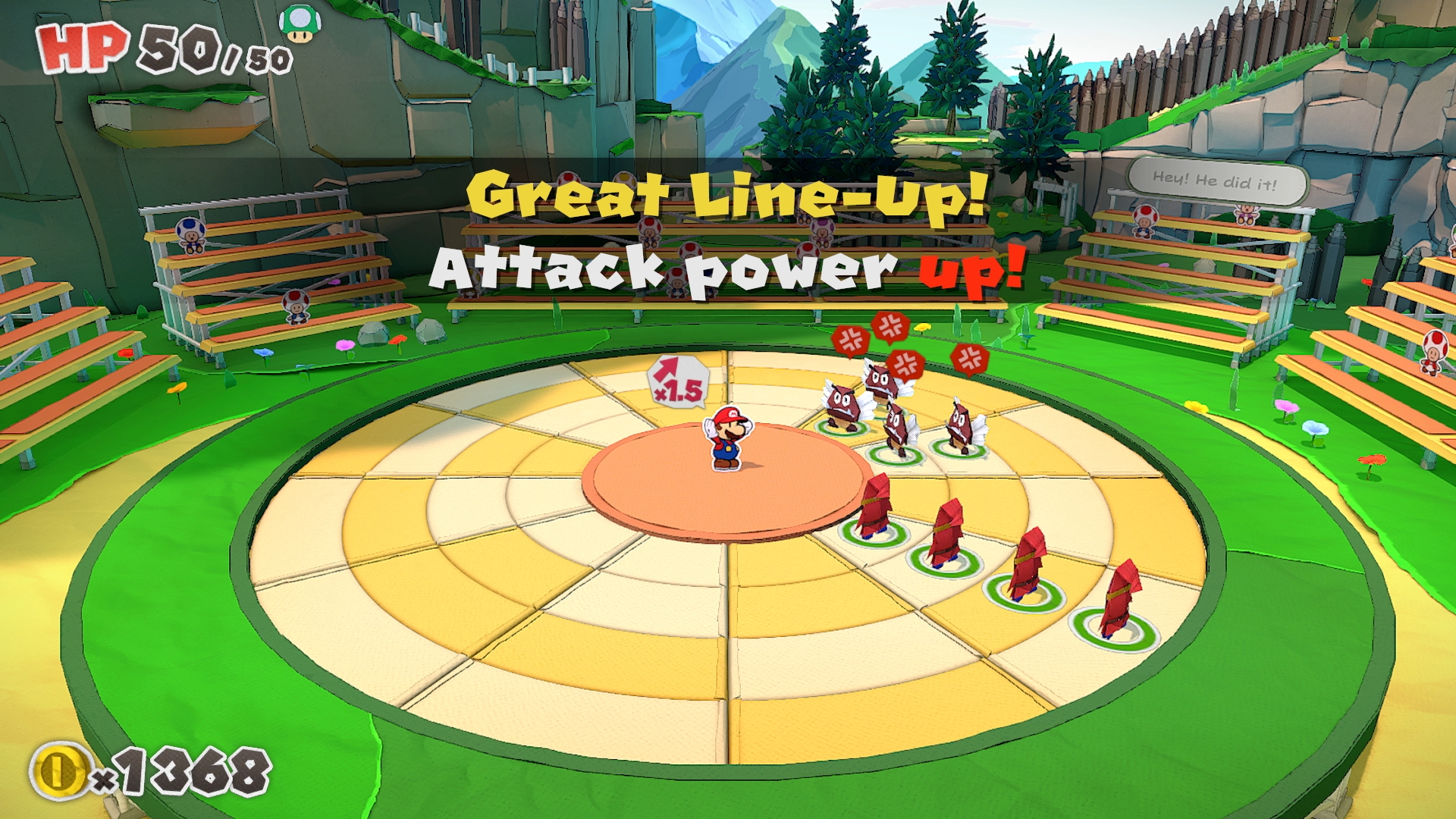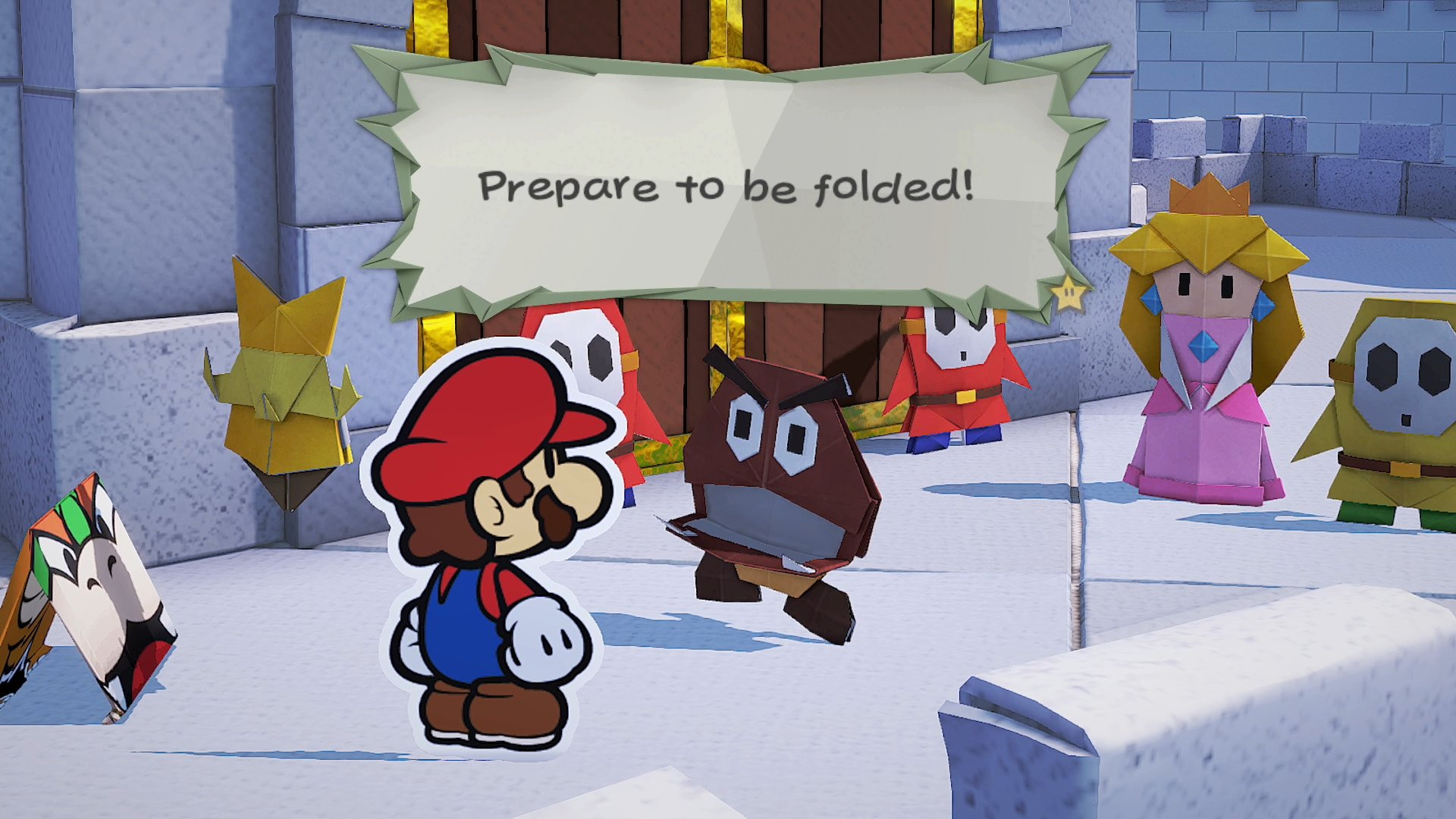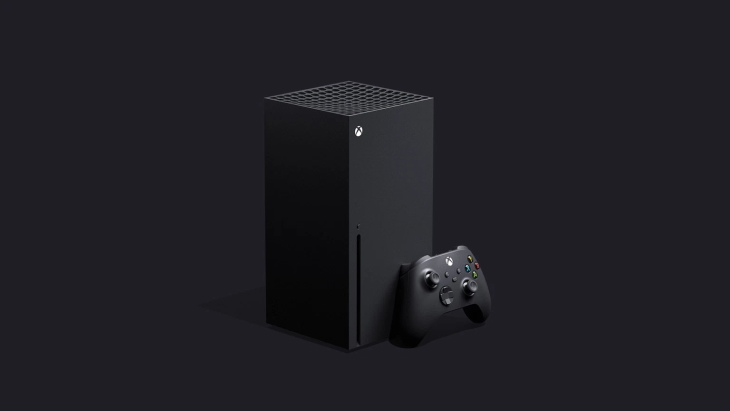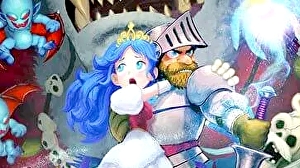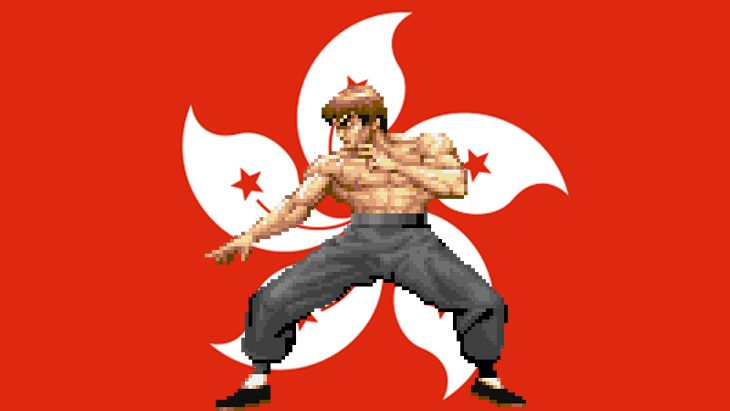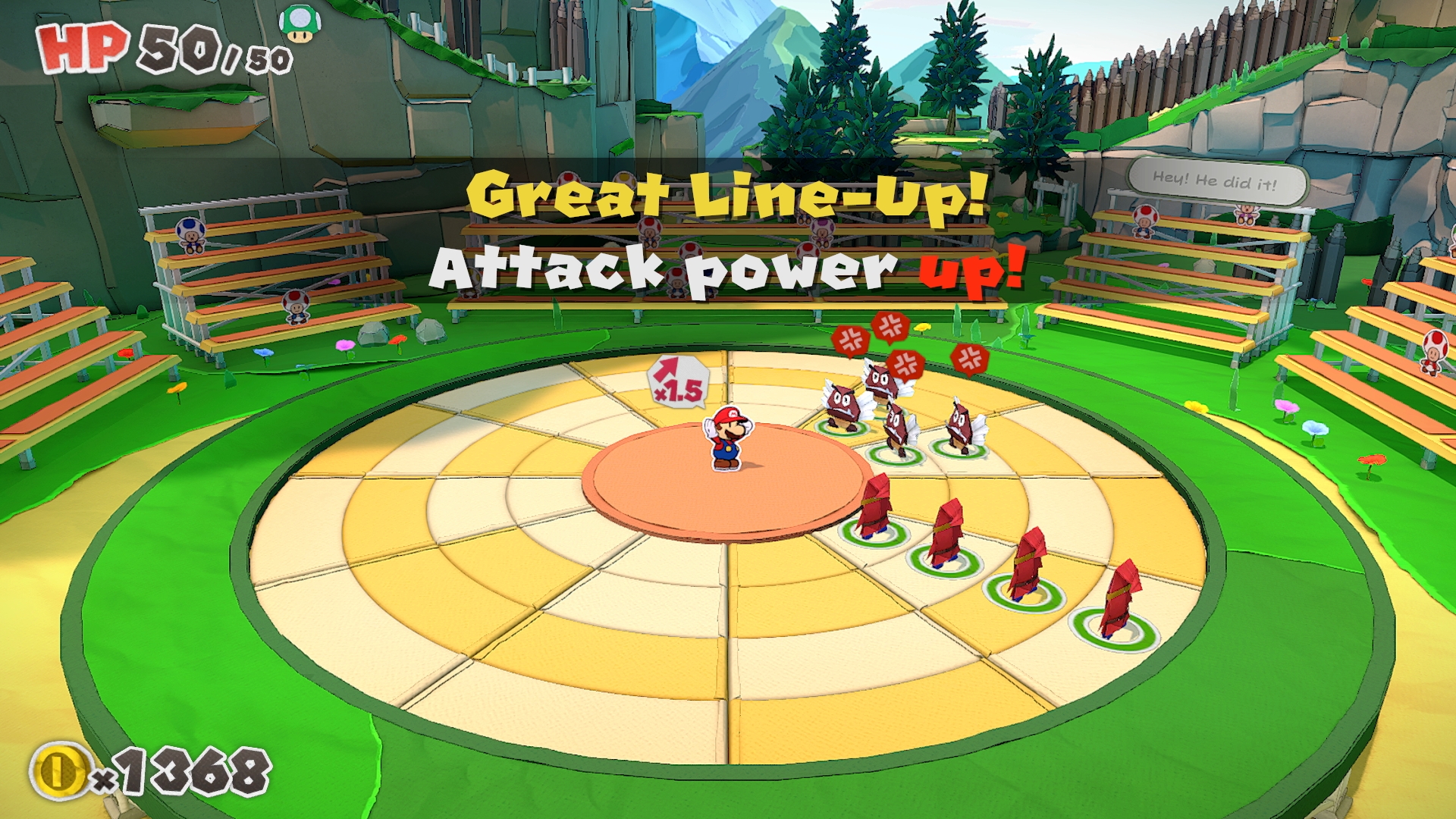
It’s not unfair to say that Paper Mario: The Origami King faced the initial hurdle of a lot of skepticism from players leading into its release. While in its heyday, the Paper Mario series delivered some of the most beloved games ever, such as The Thousand Year Door on the GameCube, its star has long since fallen. With the last two entries being considered major missteps for the franchise, and The Origami King, despite initial rumors to the contrary, apparently following in their footsteps, many players felt justified in dismissing it – and after all, the series has hardly earned the benefit of the doubt over the last few years, so who can blame them?
The good news, however, is that The Origami King is a delightful game. While it doesn’t quite reach the same heady heights that The Thousand Year Door scaled, it is easily not only the best game in the series since then, but also quite possibly the best game in the series with the exception of the GameCube classic.
It’s important to understand what this game is and isn’t before getting your hopes up, though. What it’s not is a return to the style of the original two games. What it’s not is an RPG. If you are expecting this new game to follow in the footsteps of the original Paper Mario games, you are going to come away disappointed, because for all its merits, The Origami King simply is not that.
What it is, instead, is a riotously fun action adventure game, featuring some extremely clever writing, memorable characters, some of the most imaginative and gorgeous locales in the series’ history, and, finally, battles that don’t feel like a chore, and that are actually fun to engage with.
Let’s get down to those battles first and foremost, because that’s going to be the key point of contention. When Sticker Star removed experience and levels, battles become entirely pointless – because why battle when you’re not getting anything out of it? It was a fundamental design flaw that also carried over to Color Splash on the Wii U; the announcement that Origami King would also lack experience and levels would presumably lead one to believe that it would have similarly pointless battles.
"What it is, instead, is a riotously fun action adventure game, featuring some extremely clever writing, memorable characters, some of the most imaginative and gorgeous locales in the series’ history, and, finally, battles that don’t feel like a chore, and that are actually fun to engage with."
The good news is that by a combination of some clever maneuvers, the game mostly sidesteps this problem entirely. A lot of the battles in the game, including the spectacular boss fights, are story mandated – you must battle to progress. This very easily nullifies the question of “why bother”, because you have to bother if you want to progress in the game at all. The Origami King also introduces a mechanic where it lets you flat out skip battles with easier enemies (relative to your HP) as long as you jump on them or hammer them in the field – again, removing a lot of the pointless fights that you would otherwise feel compelled to skip. The final thing The Origami King does to make battles feel worth it, is to make them a whole lot of fun.
The new battle system in The Origami King is extremely unique. Featuring a series of rings that you have to manipulate to line up enemies just right to be able to land blows on them, it solves frantic puzzle solving (since you get only a limited amount of time to line enemies up) with the otherwise more traditional turn based action that Mario RPGs usually have. Each battle becomes a puzzle of maximizing how much damage you dish out, while minimizing how much of a hit you take. By including multiple different weapons that deal different kinds and degrees of damage, and mixing that with this puzzle based element, while retaining some traditional Paper Mario series staples, such as action button prompts (to increase the damage you inflict even more), battles become exciting challenges on their own, even hours into the game – and since they’re so fun, they rarely prompt the “why even bother” question.
These battles come to a head in the spectacular boss fights. The boss fights are flat out some of the most enjoyable and challenging content in the game. Literally flipping regular battles on their head, these battles see the boss in the center of a circle, and you having to arrange rings to be able to forge a path to them. You can’t attack the boss unless you made your way to them – and different areas of the boss have different degrees of vulnerability, again prompting you to spend some time thinking about where you want to go, and how you want to get there.
"Battles become exciting challenges on their own, even hours into the game – and since they’re so fun, they rarely prompt the “why even bother” question."
Even their mechanical finesse aside, bosses in the game are fantastic. Their visual design is great, and they comprise some extremely spectacular setpiece moments that also include some of the game’s cleverest dialog – which, by the way, is saying something, given how clever the dialog in the game can get. The Origami King extends an olive branch to those jilted by the recent games’ refusal to have original characters by sort of going halfway there – you get a fair bunch of original characters, some even named, and they accompany you on your sojourns across the land. These characters are extremely well written, with some surprisingly emotional story beats, and on the whole they add the kind of gravitas and personal resonance that was entirely missing from the last few Paper Mario games otherwise.
That kind of humor is reflected elsewhere to. Taking a leaf out of Breath of the Wild and Super Mario Odyssey’s books, The Origami King encourages players to go out of their way to any nook or cranny that catches their fancy, and interact with anything that seems out of the ordinary – and it always rewards the player for doing so, most often in the form of Toads (whom you’ll be rescuing from their various predicaments throughout the game). Each Toad has a unique quip or one-liner after they’re rescued, and some offer other incentives too – whether that be a consumable item, or unlocking a facility or shop that can help you on your adventure.
Not that you really need incentives to explore the world in The Origami King – it incentivizes itself. The world is absolutely stunning, with a strong art style making for some of the most memorable locations the series has seen yet. In a first for Paper Mario, you get one continuous world, rather than a storybook-themed level select screen, which greatly adds to the sense of going on an adventure across the lands. Each area is massive, with lots of potential secrets and hidden paths, and the enterprising and curious player is always rewarded. Most of the time, you’ll simply be exploring these levels because you want to, not because you have to.
"The world is absolutely stunning, with a strong art style making for some of the most memorable locations the series has seen yet."
The presentation of the game is paramount in selling that sense of an inviting world, because poor graphics or art could easily have dissuaded a lot of players from even attempting that. Thankfully, as is always the case with this series, the art style in The Origami King is extremely sharp and attractive, leading to colorful and breathtaking graphics a whole lot of time. The music is great too – though again, that can hardly come as a surprise to anyone who has kept up with the series. All of these elements – graphics, music, writing, battles, world design, everything – come together to give the game a sense of intangible whimsy and charm that the recent games in the series had, not lost, but been deficient in. It definitely feels like an adventure to rescue the Mushroom Kingdom (again) this time around.
For its many strengths, however, The Origami King does include a few missteps that mar the experience somewhat. Chief among these is the extremely slow start, with the first few hours forcing the player down a hyper-linear critical path, with repeated tutorials and dialog interrupting you every few seconds. Worse still is the excruciatingly slow text speed – and you can’t even adjust that. So for the first few hours, you’re forced to watch words that you already read a minute ago crawl through your screen again as the same tutorial that’s already been shared a few times already is repeated, again. It reminds me of how much I hated games like Skyward Sword or Final Fantasy XIII for doing the same thing, and I don’t like it any better here either.
Other problems are more minor, but no less grating – for instance, there is no way to remap controls (which is especially egregious, because The Origami King maps Jump to A and the hammer to B, totally inverting the expected layout, and causing the player to fumble for the first few hours before they get used to it). There are also a surprising amount of loading screens – they’re very short, rarely more than a couple of seconds, but it’s a little disappointing that the world isn’t more contiguous.
Most of these problems, however, are nitpicks, and on the whole, they do little to hurt the experience. It has taken Intelligent Systems ten years and three attempts with this new formula to finally get it right, but they have now. The Origami King is charming, funny, gorgeous, mechanically engaging, rewarding to explore, and surprisingly affecting. For people who have been hoping for the series to return to form, this is it – except The Origami King achieves this not by replicating past successes, but by achieving entirely new ones in equal measure.
This game was reviewed on Nintendo Switch.
